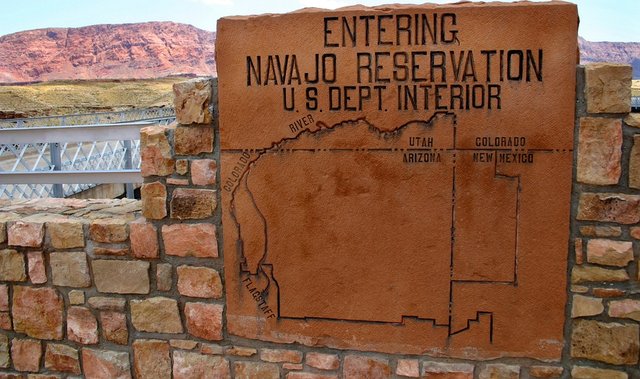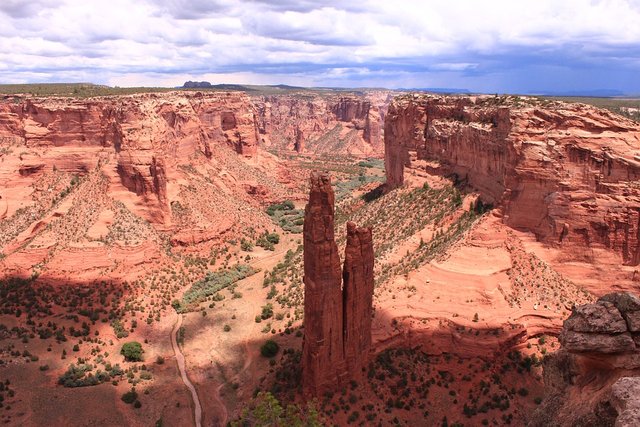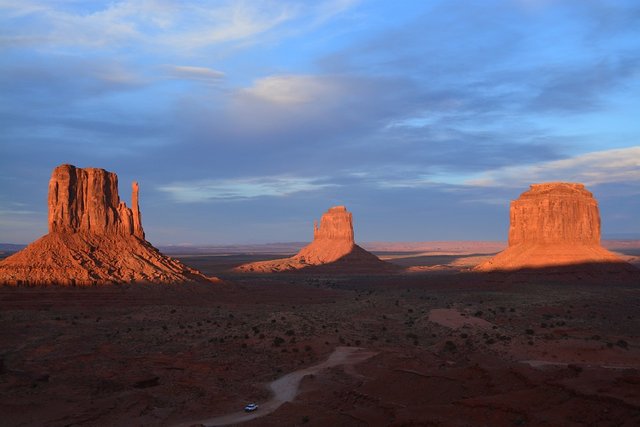Being able to turn on the water faucet and immediately see cold, clean water is a luxury so many, including myself, take for granted. Access to running water is something many Americans believe to be a part of life for the average US citizen. Many were recently surprised and outraged at the horrific conditions in Flint, Michigan, but Flint is just the tip of the iceberg.

As of 2016, roughly forty-percent of the Navajo Nation, the largest Native American reservation, has no access to running water. Much of the reservations water supply was contaminated by the mining of uranium during the Cold War era. The reservation is now littered with around one thousand abandoned mines, some sealed but most exposed causing contamination levels to rise. In 1979 the largest radioactive spill on US soil occurred in the Navajo Nation. A dam near a uranium mill's disposal pond broke, releasing ninety-four million gallons of toxic uranium waste into the Puerco River. The river flowed through many Navajo communities and was a source of life for people and livestock alike. Cancer levels in the Navajo population, which were once so low that the people were believed to be immune, have sky-rocketed. Lakes and wells have been marked unsafe as much of the water is now loaded with dangerous levels of radioactivity.

The widespread uranium contamination makes it extremely difficult to access drinkable water through wells and rivers. Many families have to make one hundred mile round-trips to drive to the nearest clean water source with barrels to fill and haul back to their homes. Others do not have access to a vehicle. Many look forward to monthly visits from Darlene Arviso, a local Navajo bus driver who uses her giant tanker truck to deliver water to hundreds of families. You can see her incredible story below.
Those out of Darlene's reach are forced to rely on community wells, which can be miles away. Families must make the water they do get last. Many households get by on just seven gallons a day while the average American uses about one hundred gallons a day. Countless families use the same bucket of water to bathe, wash dishes, and flush the toilet.

Government relief is slow-moving as state officials are shifting the responsibility to federal officials and vice-versa. And since the Navajo Nation spans across New Mexico, Utah, and Arizona the Navajo Council is not just struggling with one state government but three. A new settlement is in the process of being made with the state of Utah in order to bring water to more of the Navajo Nation's Utah chapter, but this will be a long and costly process which will not directly affect Navajo families for years. There is currently one non-profit organization working toward bringing running water to Navajo families by the name of Dig Deep. You can see some of their work below and find their website here.
The fact that so many American citizens lack access to clean water is unacceptable. A glass of cold water should not be a luxury. Children should not go to bed thirsty because the water truck could not make it that day. The fact that these uranium mines continuously contaminate the land with toxic radioactivity is insufferable. And the lack of visibility of these issues is equally as upsetting.
Let's get this story rolling!
Downvoting a post can decrease pending rewards and make it less visible. Common reasons:
Submit
That would be awesome. Honestly the more people that know about it, the better. Making an issue visible is the first step in working towards a solution.
Downvoting a post can decrease pending rewards and make it less visible. Common reasons:
Submit
Agreed. You have my vote. I sincerely hope that this platform can rise above the trivial, and we can curate meaningful content such as this. Critial media literacy is here and now helping to make voices of the unheard ring
Downvoting a post can decrease pending rewards and make it less visible. Common reasons:
Submit
See, here is the thing about this part of the US... its not just the Natives, we're getting into a real Water War situation there in earnest now. To the point that its alarming how quickly short-term profiteering is creating so many consequences.
I think the tipping point started when California and Colorado had to renegotiate its water deviation from the Colorado River, but its only intensified since then. Vice did a really sobering documentary on it early this year that will do a better job that I can regarding the situation with the Natives:
I going to bookmark this and write up an article outlining the situation in CO a bit better and the dire implications its having and its affects soon.
Downvoting a post can decrease pending rewards and make it less visible. Common reasons:
Submit